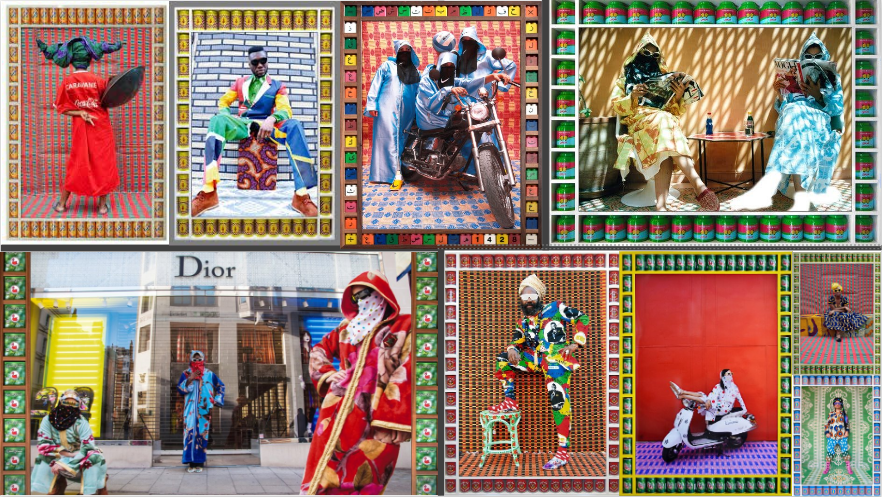
Introduction
Hassan Hajjaj is a modern Moroccan artist and photographer, who is mainly known for his strong, abstract and outside of the box portraits. Hassan Hajjaj was born in Larache, Morocco in 1961 and when he was a teenager he moved to London. Hassan Hajjaj having experienced both living in Morocco and England (London), really formed his style of photography and art which he produces and explores. His photography work mixes lots of cultures together, specifically the African culture with the Pop culture, joining two completely different ideas together and making powerful imagery which is vastly noticeable. Hajjaj is mainly inspired by reggae, hip hop, fashion, West African lifestyle and UK culture, showing various cultures in his work.

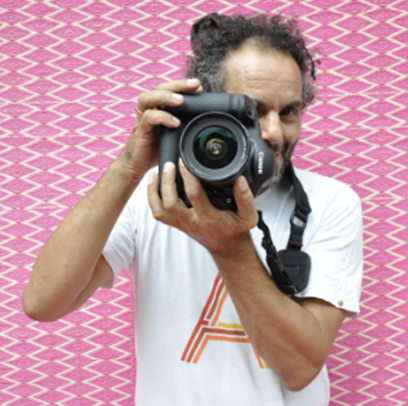
Hassan Hajjaj`s photography style is mainly based around portrait photography however, Hajjaj is not you regular portrait photographer, he takes abstract portraits rather than simple ones. Hajjaj uses his own experiences and life and converts it into his subjects / models, the models he uses in his photos are usually wearing traditional clothing (usually Moroccan) mixed with designer / branded clothing for example, Adidas, Louis Vuitton, Coca Cola, Nike etc. As well as dressing up his models in this sort of clothing, he would also capture everyday things or regular objects like branded food and tinned cans of food, giving that pop art feeling and effect to his photographs. Everyday objects are placed around the actual photograph, creating a frame / border for the main photograph. Hajjaj states “I’m also drawn to work with cola cans and brands because I’m a Sixties child when brands were heavily pushing their names out; Coca-Cola was a big name in Morocco, and it was a ‘rich men’s drink’ that we would drink when guests were coming to our house.” This was said in an interview undertaken with 1-54 art fair. This quote shows that he would not just randomly pick the brands which he used and that there is a deeper meaning behind the choices of brands, as he is connecting to his youth and reaching out to his memories.

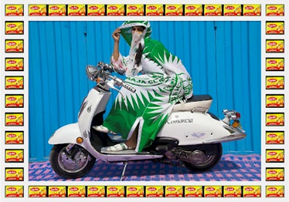
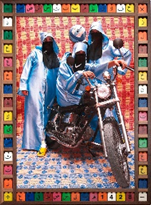
Kesh Angels, Hassan Hajjaj (2010 – 2012)
His photographs are normally bold and lively making them stand out to the viewer, the photos being vibrant and standing out separates the photo from the stereotypical ideas of the western, Moroccan and / or Muslim identity. Instead of fitting in with the stereotypical ideas, Hajjaj makes sure that his images show off the models as strong, fashionable and interesting personalities, he manages to do this by using magazine style setups for his shoots however the magazine styled setup has its own change made to it which reflects the traditional culture with the culture nowadays around the whole world.
His Work
Kesh Angels was one of the most popular series of shoots which he had done, the main idea behind this gallery / series of photographs was to have Moroccan women on top of a moped or motorbike confidently. The clothing used is a blend of both traditional Moroccan clothing as well as streetwear / modern brands, the use of both these clothing forms challenges the stereotypes about women, specifically Moroccan women as they are displayed powerfully with stye and embracing their own culture and background.
Another famous series of work which is made by Hassan Hajjaj is My Rockstars, My Rockstars is all about musicians, artists and performers globally. Similarly to Kesh Angels, Hajjaj uses bright and vibrant backgrounds as well as different textures or patterns included in the background, in the foreground is a model wearing a combination of both conventional fashion as well as modern, streetwear fashion. The portraits taken in this series are different to the previous series mentioned, these portraits are filled with good energy, vibrant colours and they perfectly show the connection between music, culture and fashion. Hassan Hajjaj not only shows the connection between music, culture and fashion but also shows how global trends or influences can blend and come together in a positive way, creating abstract interesting pieces of art.

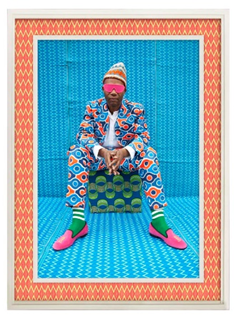
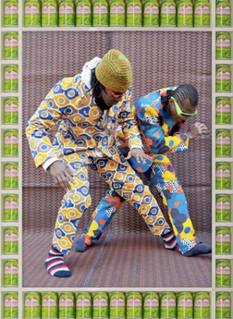
My Rockstars, Hassan Hajjaj (2012-2013)
How Hassan Hajjaj Links To My Project
Hajjaj’s work links efficiently to my project, Union. His photographs link specifically by cultural fusion and fashion identity, he captures how clothing can unite and come together to create new and unique ideas for example he does this by putting traditional, modern, global and pop culture ideas together into one frame. In my project I will use Hassan Hajjaj as an inspiration, intending on taking photographs of models with cultural outfits with features of modern-day designer or brands.
Image Analysis
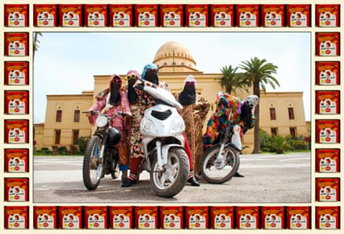
In my opinion, this is the most powerful and the best photograph after having researched Hassan Hajjaj. I will now analyse this image in high detail:
Technical-
This photo uses natural daylight as it is taken outside in the streets of Marrakech, the lighting is not intense which you can tell from the very faint shadows on the floor, if the lighting was harsher the shadows of the bikes and the people would be darker, standing out more. I like that the photo is taken outside rather than inside a studio with artificial lighting, I think that this makes Hajjaj’s image more powerful and even more genuine. The depth of field in this image is sharp, everything in the foreground, which is the women, and the bikes are all clearly in focus and can be seen with no blur or grain, the same goes for the background, little to no blur is seen in the background of the image and the overall composition is sharp, clear and in focus. Since there is no grain and the image is fully in focus, I can make an educated assumption that low iso (in the 100-400 range) was used and the shutter speed would have been fast rather than slow however not too fast, somewhere in between slow and fast.
Visual –
This photo is centrally framed with the models all posing in an organized order, this photo as well as the rest of his images in this series have a border / frame of a branded product, in this instance the product is a tin of food (most likely a Moroccan product.) The purpose of this border is to keep everything kept in place and the border holds the image together perfectly as well as filling up possible empty space. Another visual feature which is seen in this photograph is the use of leading lines, the leading lines come from the bikes, the street and the building the three leading lines elements make the viewers eye go straight to the main subject which is the models framed centrally.
Contextual –
Hassan Hajjaj`s work is quite heavily inspired by pop art and fashion photography; he also does have some features of street photography within his work. Hajjaj also challenges the stereotypes of Muslim women in this photograph, he has them dressed in stylish, bold outfits to argue against the stereotypical traditional way.
Conceptual –
In my opinion, I think that this image is all about embracing your own culture and traditions as well as challenging stereotypes. I think that he is trying to tell a story through these sets of images and especially this image by mixing the traditional with the modern brands, motorbikes and the pop culture, showing how it can all come together / unite and that culture is no longer a separate thing from identity. Showing that identity can be multiple things and not stuck in old fashioned ideas.
SOURCES
Tate (n.d.). Strike a Pose – Tate Etc. [online] Tate. Available at: https://www.tate.org.uk/tate-etc/issue-59-autumn-2023/strike-a-pose-a-world-in-common.
Wikipedia. (2023). Hassan Hajjaj. [online] Available at: https://en.wikipedia.org/wiki/Hassan_Hajjaj.
193 Gallery. (2019). Hassan Hajjaj. [online] Available at: https://www.193gallery.com/artists/84-hassan-hajjaj/.
Yossi Milo. (n.d.). Hassan Hajjaj – Biography. [online] Available at: https://yossimilo.com/artists/40-hassan-hajjaj/biography/.
1-54 (2017). Interview with Hassan Hajjaj – 1-54 %. [online] 1-54. Available at: https://www.1-54.com/interview-with-hassan-hajjaj/.
